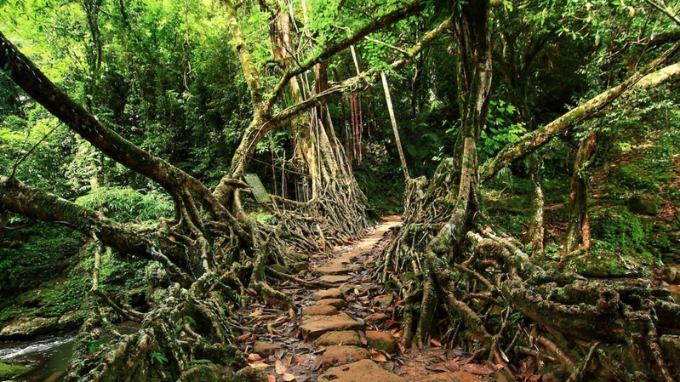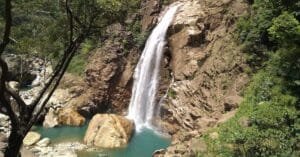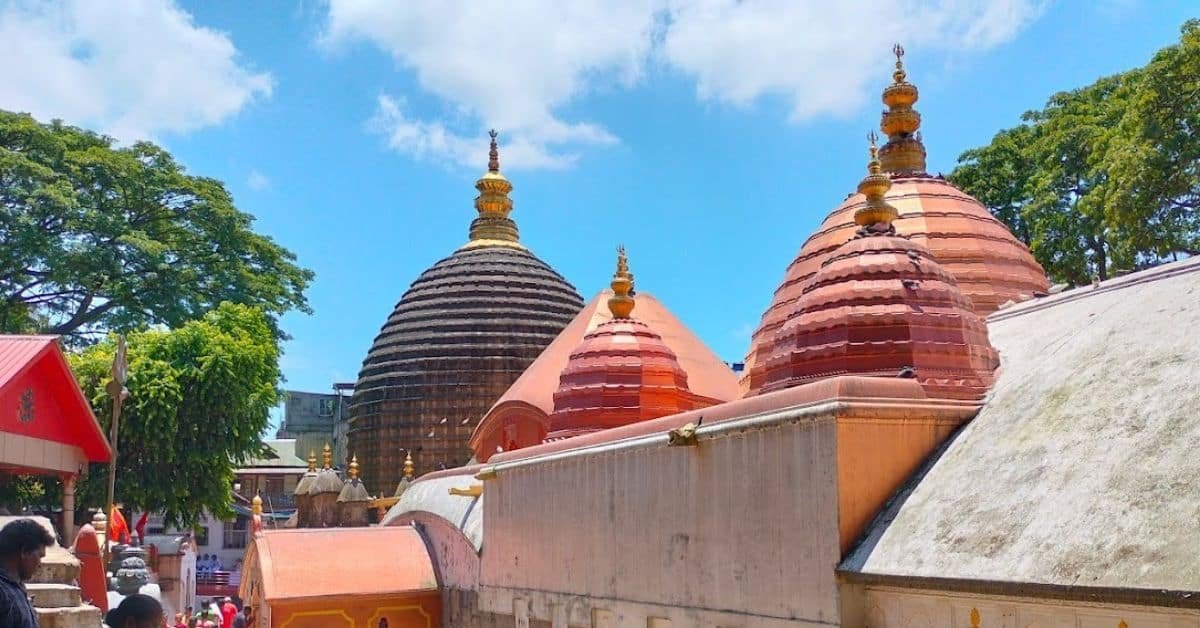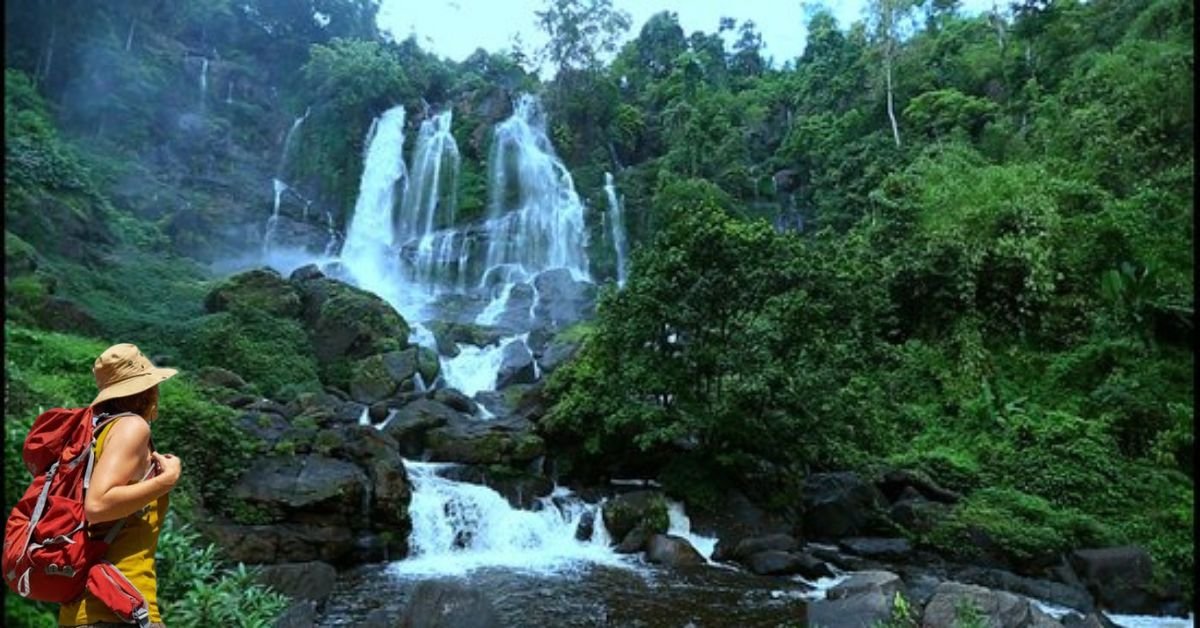The root bridges of Meghalaya are one of the wonders of North East India. Every year many tourists flock to Meghalaya just to see these wonders. These root bridges of Meghalaya perfectly encompass the living relation between human and nature. It also shows us how forces of nature can be utilised for our benefits without harming it.
What is living root bridges of Meghalaya?
The living root bridges of Meghalaya are a remarkable natural engineering feat. They are formed by guiding the growth of Ficus elastica tree roots over rivers and gorges, creating strong and living bridges. Over time, the roots interweave, providing a stable and sustainable means of crossing water bodies. These bridges are unique to the Khasi and Jaintia tribes in the northeastern Indian state of Meghalaya. They are not only functional but also environmentally friendly, as they eliminate the need for conventional construction materials like wood or steel. The bridges grow stronger with age and can last for centuries, making them a testament to human ingenuity and their harmonious coexistence with nature.
Where do you find such living root bridges?
As these bridges are unique to the Khasi and Jaintia tribes of Meghalaya, these are found mainly in East Khasi Hills and West Jaintia Hills of Meghalaya on the southern part of the Shillong Plateau. Exact number of such bridges are still not counted. It has been estiated there are more 100 such bridges in Meghalya. Some bridges are still in developing stage as construction of such root bridges need a minimum of 30 years. Most famous root bridges of Meghalaya has been listed below along with their locations.
Mythology behind living root bridges
The tradition of living root bridges among the Khasi people is shrouded in mystery and has been passed down through generations. The Khasi people themselves do not have a definitive answer to when or how this unique tradition began. According to Khasi mythology, their ancestors have a fascinating connection to living root structures. They believe that their forebears descended from a living roots ladder, which they refer to as “jingkieng ksiar,” that connected the realms of heaven and earth. This mythological story implies that the roots themselves have a spiritual and historical significance for the Khasi people.
How are they structured?
Initial Setup: The growth process involves the repeated connection of Ficus aerial root fibers over a gorge or river. This process begins with young, flexible aerial roots being placed in hollowed Areca catechu trunks. These trunks provide nutrition, protection, and act as guidance for the roots.
Structural Support: To support this setup, a bamboo scaffold is placed across the river. It acts as a temporary bridge for the local community.
Root Strength: As time passes and the aerial roots grow stronger, the Areca catechu trunks become unnecessary. Bamboo poles need periodic replacement as the roots get thicker and the bamboo deteriorates due to the wet conditions.
Community Involvement: Regular replacement of bamboo poles maintains a relationship between the living bridge and the local community.
Integration of Steps and Handrails: More roots are connected to the primary root system with additional features like steps and handrails added later.
Testing and Reinforcement: Heavy materials like stones, timber planks, leaves, and soil are added incrementally to fill gaps and test the strength of the living root structure. Soil compaction is facilitated by humidity, moisture, and pedestrian movement.
Stability: After 15 to 30 years, the root structure becomes strong and stable enough to support significant weight without the bamboo scaffold.
Top Root Bridges of Meghalaya
We have curated a list of root bridges based on their popularity. The oldest and longest root bridges of Meghalaya are also included in the list below.
The Double Decker Root Bridge near Nongthymmai

It is one of the most famous living root bridges of Meghalaya located at Umshiang in Nongthymmai village near Nongriat off Cherrapunjee. It is 21 Km from Cherrapunjee and 65 Km from Shillong. You will find numerous waterfalls on the route from Cherrapunji to Nongthymmai. It is a 30-metre bridge that can bear the weight of 50 people at a time. The journey to the Nongriat double-decker root bridge is quite an adventure. You start near the Tyrna village at the top of a valley and make your way down about 3,000 steps. Along the path, you’ll see breathtaking views and beautiful natural scenes near Nongriat village to enjoy. The bridge is estimated to be 200 years old.
Ummunoi Living Root Bridge

Another such bridge near Laitkynsew village, the is 53-foot-long and locally known as ‘Jingkieng Deingjri’, meaning the “bridge of the rubber tree.” It is said that it is more than 100 years old. It is 21 Km from Cherrapunjee and 65 Km from Shillong.
Mawkyrnot Root Bridge of Meghalaya

At an astonishing length of 53 meters, the living root bridge found in Rangthylliang at Mawkyrnot holds the title of being the world’s longest of its kind.The Mawkyrnot Root Bridge, located in Rangthylliang, East Khasi Hills, is easily accessible from Shillong Airport, approximately 78 kilometers away, with the nearest town being Pynursla Village. There are a total of 1500 steps which lead you down to this living root bridge. In the vicinity, there exist five living root bridges in total. Nevertheless, the one situated in the Mawkyrnot region stands out as the most extraordinary among them all, owing to its exceptional beauty.
Riwai-Nohwet Root Bridge

This famous root bridge is situated at village Riwai near a town called Nongthymmai. It is 75 km from Shillong and can be accessed through Mawlynnong road. One needs a trek a distance of 450 mtrs to the bridge. If you are traveling to Mawlynnong- Asia’s cleanest village- then this is a must visit place as it is on the same route.
Nongblai Root Bridges
The village Nongblai is famous for its root bridges and there are as many as 16 root bridges in the village. Environmental activists of this region has been actively canvassing for declaration of Nongblai village as ‘Living Root Bridge Heritage Village’ . To reach Nongblai, one can follow these directions: After covering a distance of 45 kilometers by car from Shillong along the Shillong-Dawki road to Wahlyngkhat village, it requires approximately one hour of walking on foot to reach Nongblai. This place is one of the hidden gem of Meghalaya if you want to explore nature at its pristine form.
Kudengrim Root Bridge

The Kudengrim Root Bridge, a remarkable example of Meghalaya’s living root bridges, is located in the West Jaintia Hills district, not far from Jowai town. Situated approximately 52 kilometers from Jowai, this natural wonder showcases the local ingenuity of the Khasi tribes in crafting bridges from living tree roots. The West Jaintia Hills region is renowned for its lush greenery and abundant natural beauty. Visitors to the Kudengrim Root Bridge can also explore the nearby waterfalls, offering a serene and enchanting escape into the heart of Meghalaya’s picturesque landscape.
How to reach Meghalaya?
If traveling by air, you can fly into Lokpriya Gopinath Bordoloi International Airport in Guwahati, Assam, which is the nearest major airport. From there, you can hire a taxi or use public transportation to reach Meghalaya. Alternatively, there are train services to Guwahati, and from there, you can continue your journey by road.
FAQs Regarding Root Bridges of Meghalaya
Which is the longest root bridge of Meghalaya?
Rangthylliang bridge, situated near town of Pynursla, is the longest root bridges of Meghalaya. It’s length is 50 meters (160 feet).
Which is the most famous root bridge of Meghalaya?
The most famous root bridge of Meghalaya is the “Double Decker” root bridge of Nongriat which is estimated to be 200 years old.












